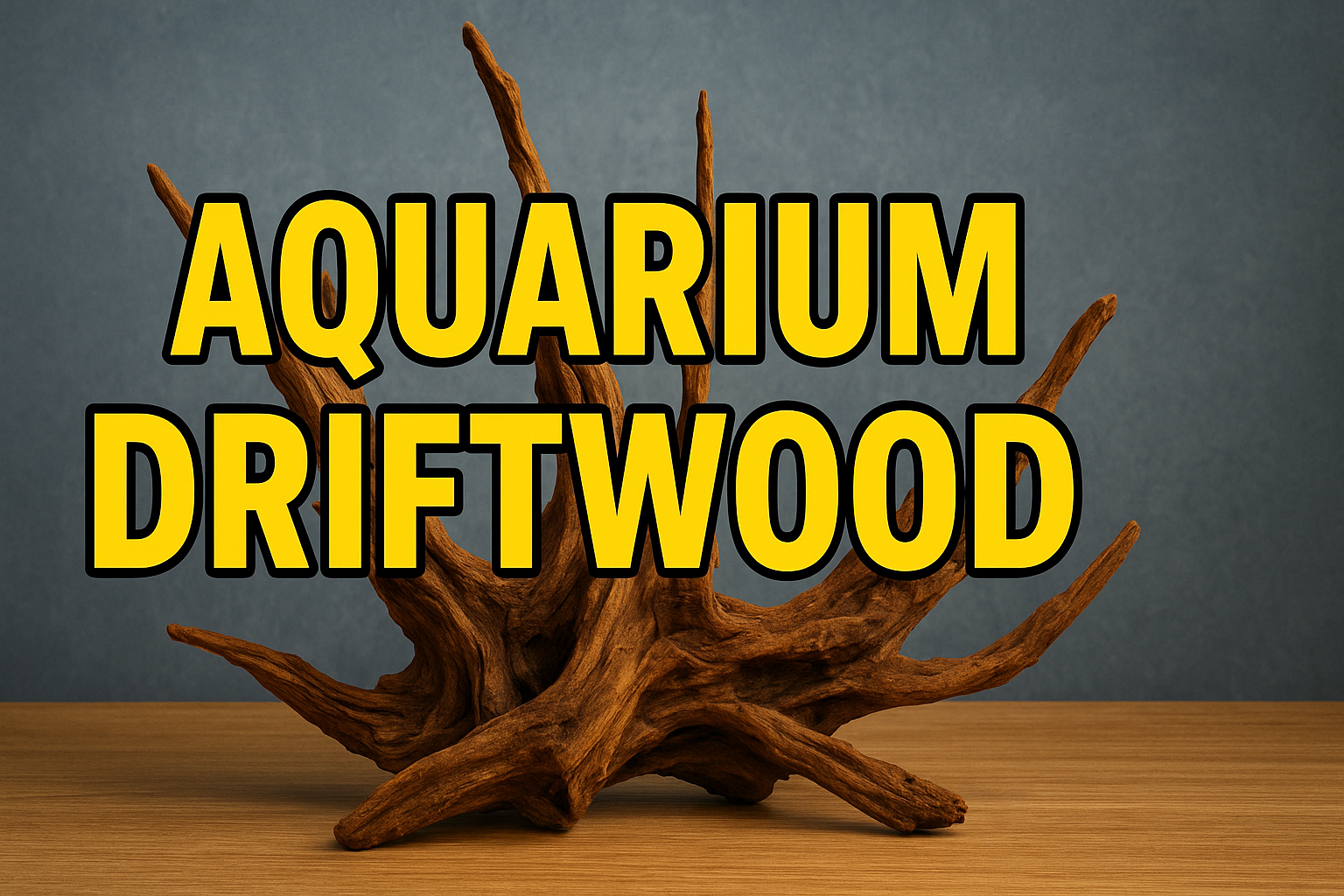Aquarium driftwood is one of the most popular natural decorations used in both freshwater and saltwater aquariums. Not only does it enhance the aesthetic beauty of your tank, but it also provides a natural and comfortable environment for fish, shrimp, and other aquatic life. Driftwood plays a key role in aquascaping, biological balance, and the overall health of your aquarium.
In this detailed aquarium driftwood guide, we will explore its types, benefits, preparation methods, placement, maintenance, and common mistakes to avoid. By the end of this article, you’ll know everything about using driftwood to design a safe, natural, and visually stunning aquarium.
What is Aquarium Driftwood?
Driftwood is natural wood that has been weathered, aged, and shaped by water currents in rivers, lakes, or oceans. When collected and treated properly, it becomes safe for aquariums. In aquascaping, driftwood is used to replicate natural habitats, making aquariums look more like riverbeds, jungle streams, or tropical lakes.
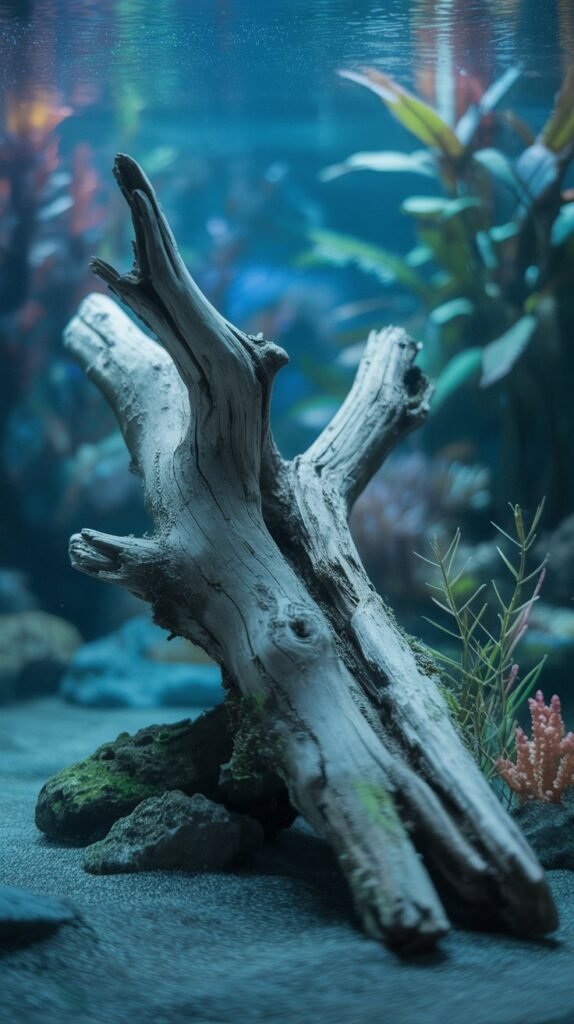
Driftwood also supports aquatic life by:
- Releasing tannins that create slightly acidic water.
- Providing hiding spots for fish and shrimp.
- Serving as a surface for beneficial bacteria and biofilm.
Benefits of Aquarium Driftwood
Using driftwood in aquariums has both aesthetic and biological advantages. Let’s look at the major benefits:
1. Natural Aesthetic Appeal
Driftwood brings a natural look to your aquarium. Its unique shapes, textures, and colors mimic real underwater environments. It can be used to create themes like jungle aquascapes, river biotopes, or Iwagumi-inspired layouts.
2. Water Conditioning
Driftwood releases tannins, which lower pH and soften the water. This makes the aquarium more suitable for species like tetras, angelfish, discus, and bettas that prefer slightly acidic environments.
3. Hiding Spots for Fish
Shy species, fry, and bottom dwellers like plecos, loaches, and corydoras use driftwood as shelter. Shrimp also graze on the biofilm that grows on it.
4. Surface for Plants and Mosses
Aquarium driftwood is perfect for attaching live plants such as Java fern, Anubias, and mosses. This enhances aquascaping by creating a lush, natural look.
5. Promotes Beneficial Bacteria Growth
Driftwood provides additional surface area for beneficial bacteria that help with the nitrogen cycle. This improves water quality and reduces harmful ammonia and nitrite levels
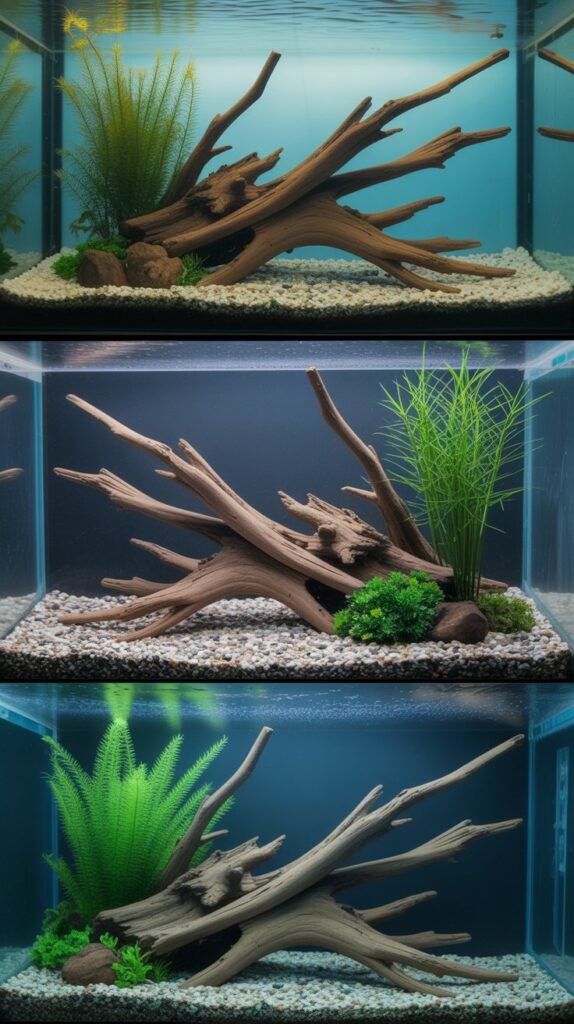
There are many types of driftwood available in the aquarium hobby. Each type has its unique look, texture, and properties.
1. Mopani Wood
- Heavy and sinks easily.
- Dark brown with lighter streaks.
- Releases a lot of tannins (may tint the water).
2. Spider Wood
- Intricate branching structure.
- Light in color, perfect for creative aquascapes.
- Needs to be soaked before sinking.
3. Manzanita Wood
- Very popular in aquascaping.
- Smooth texture and reddish-brown color.
- Long-lasting and low tannin release.
4. Cholla Wood
- Hollow and lightweight.
- Popular in shrimp tanks.
- Provides biofilm grazing areas.
5. Bogwood
- Dark, dense wood.
- Naturally waterlogged, sinks quickly.
- Ideal for Amazon biotope aquariums.
6. Saba Wood
- Large pieces with dramatic shapes.
- Great centerpiece option.
Each type of driftwood can be used to design different aquascapes depending on your theme and fish requirements.
Preparing Aquarium Driftwood
Raw driftwood must be properly treated before placing it in your aquarium. Untreated wood may contain harmful organisms, dirt, or excess tannins.
Steps to Prepare Driftwood:
- Rinse Thoroughly – Wash with clean water to remove dirt, dust, and debris.
- Scrub the Surface – Use a stiff brush to remove loose bark or fungus.
- Boil the Driftwood – Boil for 1–2 hours to kill bacteria, parasites, and soften the wood.
- Soak in Water – Place in a bucket of water for several days to weeks until it sinks. Change the water daily to reduce tannins.
- Check for Safety – Avoid sharp edges that can injure fish. Smooth them out with sandpaper if necessary.
Aquascaping with Driftwood
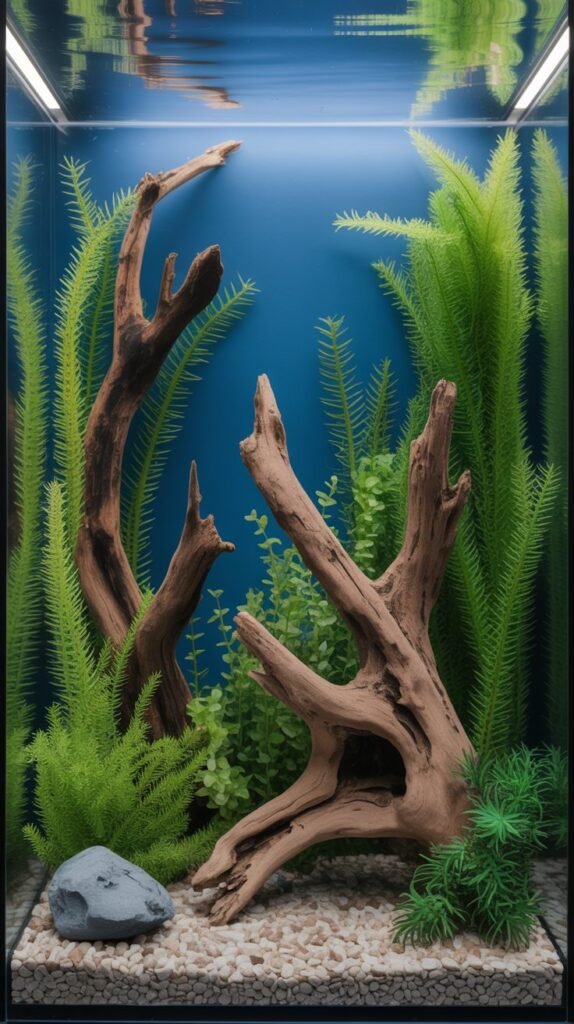
Aquarium driftwood is one of the main building blocks of aquascaping. Here are some ideas to design your tank with driftwood:
- Nature Style Aquascape – Combine driftwood with live plants, mosses, and rocks for a forest-like design.
- Biotope Setup – Use driftwood to replicate Amazon rivers, Asian streams, or African lakes.
- Hardscape Layout – Arrange driftwood in striking angles for dramatic aquascaping styles.
- Shrimp Tank – Use cholla wood or spider wood to create a grazing and hiding environment for shrimp.
Pro Tip: Use aquarium-safe glue or fishing line to attach moss and plants to driftwood.
Maintenance of Aquarium Driftwood
Although driftwood requires little maintenance, some care is necessary to keep it safe and attractive.
- Monitor Tannins – Water may turn brown due to tannins. This is harmless, but you can reduce it by adding activated carbon or Purigen to your filter.
- Check for Fungus – White fungus-like growth may appear initially. This is harmless and usually disappears as the aquarium matures.
- Avoid Rotting Wood – Ensure driftwood is not decaying, as this can foul the water.
- Clean Occasionally – During aquarium cleaning, gently scrub driftwood to remove algae buildup.
Common Mistakes to Avoid with Driftwood
- Adding untreated driftwood directly into the tank.
- Using wood collected from unsafe sources (may contain chemicals or pesticides).
- Choosing driftwood too large for the tank.
- Removing beneficial tannins completely (some fish need them).
- Not anchoring lightweight driftwood properly (may float).
Best Fish and Plants for Driftwood Aquariums
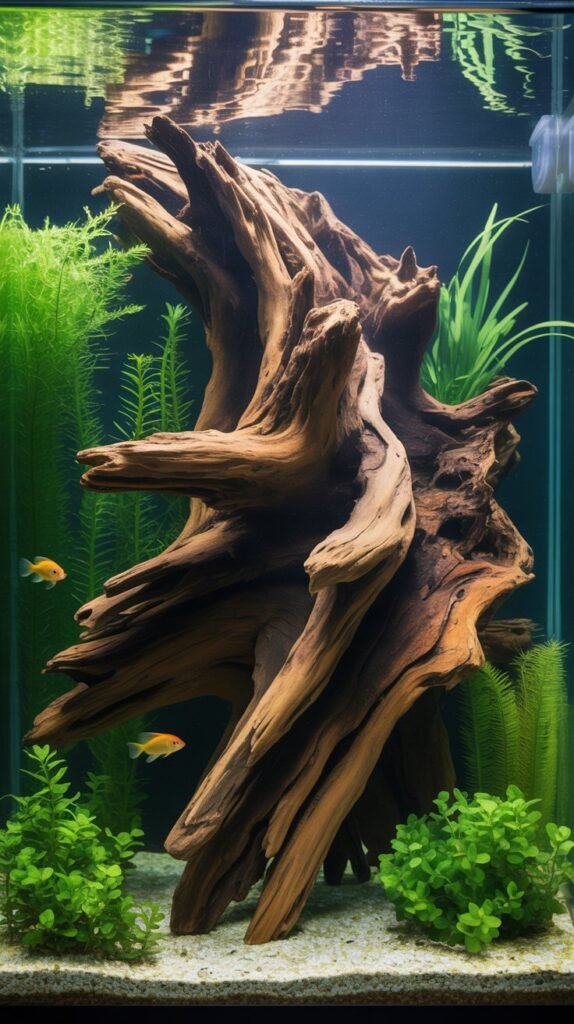
Fish That Love Driftwood:
- Plecos and other catfish (raspberry pleco, bristlenose pleco).
- Tetras (neon, cardinal, ember).
- Discus and angelfish.
- Gouramis and bettas.
- Shrimp and snails.
Plants That Grow on Driftwood:
- Java Fern
- Anubias
- Bucephalandra
- Mosses (Java moss, Christmas moss)
- Bolbitis (African water fern)
Conclusion
Aquarium driftwood is more than just decoration—it plays an essential role in water chemistry, fish behavior, and aquascaping design. With proper preparation and placement, driftwood can transform a simple tank into a natural underwater paradise. Whether you’re setting up a shrimp tank, a planted aquascape, or a biotope aquarium, driftwood is an excellent choice to create a healthy and beautiful environment.
FAQs About Aquarium Driftwood
1. Why does driftwood make my aquarium water brown?
Driftwood releases tannins that tint the water brown. This is harmless and even beneficial for many fish.
2. How do I make driftwood sink faster?
Boiling and soaking driftwood helps remove trapped air and makes it sink more quickly.
3. Can I collect driftwood from the beach or river?
Yes, but it must be treated properly to remove parasites, salt, or contaminants before use.
4. Is white fungus on driftwood harmful to fish?
No, it is harmless and usually disappears within a few weeks as the tank stabilizes.
5. How long does driftwood last in an aquarium?
High-quality driftwood can last for many years, but softer wood may eventually break down and need replacement.
6. Which fish need driftwood in their diet?
Plecos and some catfish rasp on driftwood for dietary fiber.
7. Can driftwood raise or lower pH in an aquarium?
Yes, driftwood releases tannins that slightly lower pH and soften the water.

